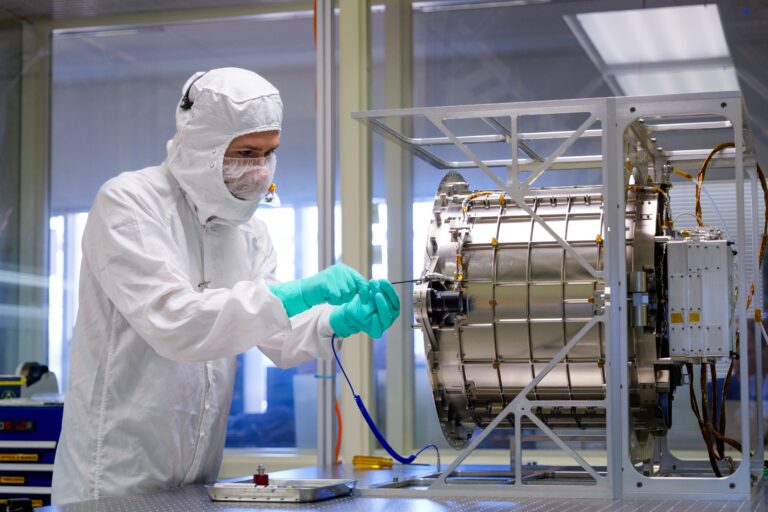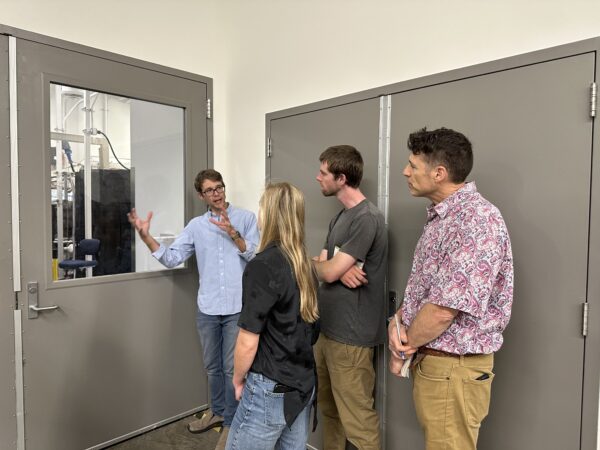
The three selected artists interacting with scientist Kevin France during a tour of LASP.
The Laboratory for Atmospheric and Space Physics at the University of Colorado Boulder is excited to announce the inaugural cohort of artists for Empty Space: A LASP Artist in Residence Program. The artists are Mario Miguel Echevarria, Alexandra Lockhart, and Clark Riley. The program is sponsored by LASP and the CU President’s Teaching Scholars Program through the Timmerhaus Fund, which supports faculty activities that promote public understanding of the value of CU degrees. The $30,000 award to David Brain, a LASP researcher and Astrophysical & Planetary Science department chair, will enable three artists to learn about the exciting space science research and innovative engineering happening at LASP over the next six months.
The artists will shadow engineers and scientists, attend meetings and lectures, and interact with LASP students and staff. The artists and scientists will also host local K-12 groups so they can learn about LASP’s expertise through art. The artists will then produce artwork inspired by their time at the institute, in any medium they choose.
The program will culminate with an exhibition at Boulder Public Library’s Canyon Gallery. It will run from the beginning of February through the end of March 2024. The artists will help lead school groups in creating a portion of the exhibition, such as providing a prompt for drawings of our solar system.
Meet the Artists:
Mario Miguel Echevarria
Mario Miguel Echevarria is a Public Artist based in Longmont, Colorado, who was born in Boulder and raised in Fort Collins. Echevarria’s family instilled in him a deep love for nature. This reverence has inspired a lifetime of passionate observation. After studying art at the Rhode Island School of Design and in Rome, Italy, Echevarria worked in construction and as a graphic designer. He soon discovered that he wanted to build more of a legacy through his art. This led him to become a Public Artist, where he could use a variety of mediums to create works of art that could be installed in the public domain. “I am a design and build artist because I enjoy the entire process of creating, from conception to installation. I am happiest when I have dirt under my fingernails!” said Echevarria.
Echevarria is looking forward to how he can utilize his background to create art inspired by LASP. “This residency is such a wonderful opportunity to explore the profound kinship I feel with nature and the cosmos, which is a consistent presence in my work,” Echevarria said. “I’m also thoroughly excited to interact with the kids and share my passion for art with them.”
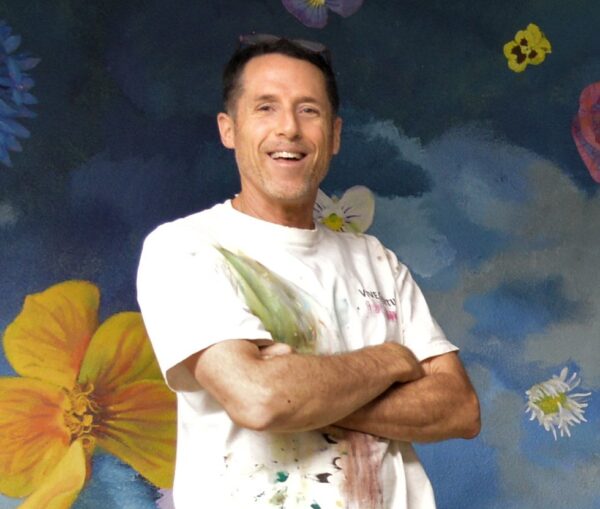

Mario‘s public artwork, “Aurora Eterna” is constructed from waterjet-cut aluminum and neon. It is installed in an Arts District in Denver, CO
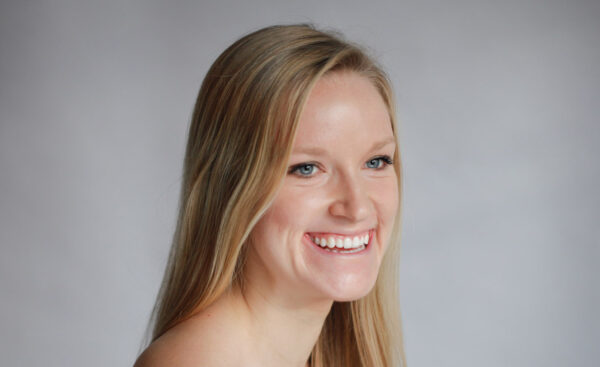
Alexandra Lockhart
Alexandra Lockhart, born and raised in Boulder, Colorado, is a dancer, choreographer, and teacher. After studying at SUNY Purchase Conservatory of Dance in New York, Lockhart participated in several projects, including the Arctic Circle Artist + Scientist Residency, a sailing expedition in Svalbard, Norway. Through movement and choreography, Lockhart enjoys finding relationships between the abstract and concrete, exploring what exists when these two opposites are combined. “I enjoy creating work that exhibits the unseen essence, initiates critical thinking, stimulates the imagination, and provokes a response or action from the viewer,” Lockhart said.
One of Lockhart’s recent projects was creating choreographic maps using environmental data. She is interested in exploring how data can be interpreted as movement and exhibiting the parallels between science and art. “Through studying with scientists and engineers at LASP, I’m excited to create choreographic maps, dance films, and live performance pieces based off of current scientific research, innovation, imaging, and data,” she added.
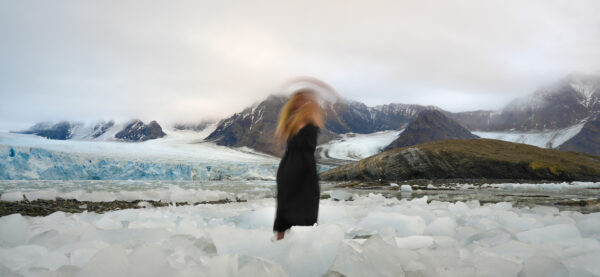
Image by Alexandra Lockhart, “Impermanence”, The Arctic Circle Artist and Scientist Residency, October 2022.
Clark Riley
Clark Riley is a Boulder-based multimedia visual artist and poet. Coming from a family with three generations of PhD scientists, Riley has a deep appreciation for the drive to understand our universe through both art and science. During the summer, Riley is a field ecologist who works in the wetlands in Colorado identifying plants and wildlife. “Working in the field really forces me to slow down and to appreciate the artistic and poetic qualities of the species I’m identifying,” Riley said. Recently, he published a collection of his poems called Artificial Existentialism. The poems explore the cultural reckoning precipitated by the release of ChatGPT, and the blurred boundaries between authentic and simulation.
“I am excited to engage with the scientists at LASP and hope to create work that is directly inspired by my time in residence,” said Riley. “As our understanding of reality becomes increasingly scientific, I seek to incorporate science methods in artistic production.”
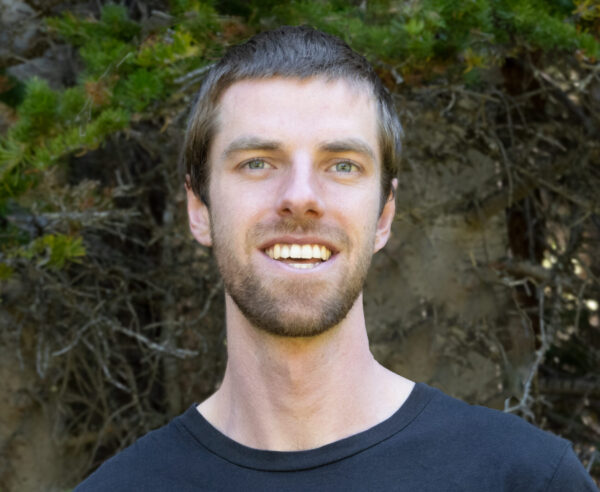
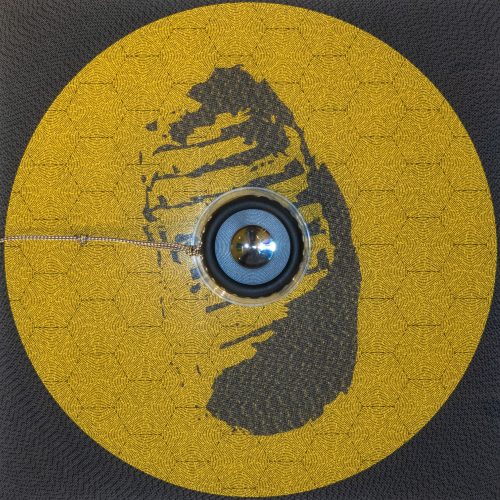
An installation shot of Riley’s piece “Insecta Futura”, which drew connections between the great unknowns of the universe and the mysteries hidden beneath our feet right here on Earth. This print was recently displayed at a community art exhibition at the Boulder Public Library focused on insect conservation.
Founded a decade before NASA, the Laboratory for Atmospheric and Space Physics at the University of Colorado Boulder is on a mission to transform human understanding of the cosmos by pioneering new technologies and approaches to space science. LASP is the only academic research institute in the world to have sent instruments to every planet in our solar system. LASP began celebrating its 75th anniversary in April 2023.

